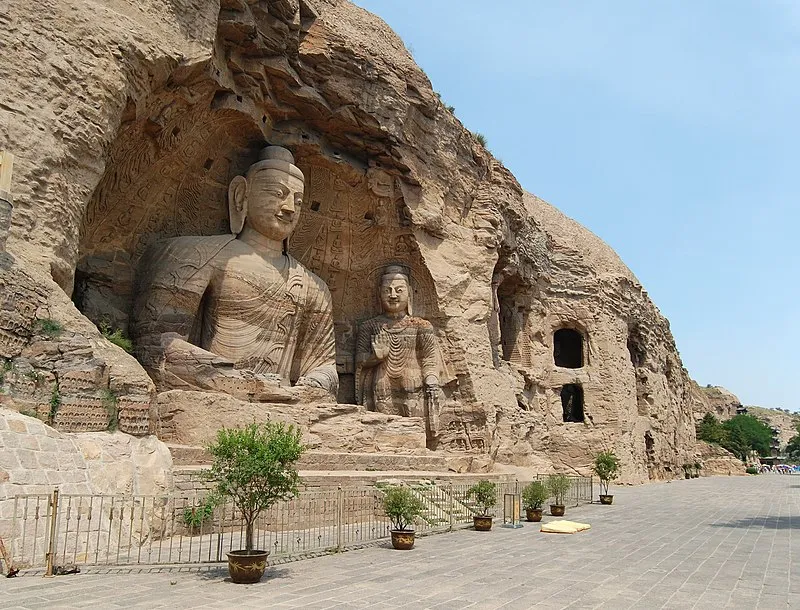1,500-Year-Old Skeletons Found Locked in Embrace in Chinese Cemetery
The couple was probably buried during the Northern Wei period, when Buddhism was taking hold in the region
:focal(696x381:697x382)/https://tf-cmsv2-smithsonianmag-media.s3.amazonaws.com/filer/f5/84/f584cecb-34d7-4c94-97d9-0bdc3321254c/skeleton_couple.jpeg)
Archaeologists in northern China have discovered two ancient skeletons wrapped in an embrace. The remains likely belonged to a man and woman who lived during the Northern Wei period (386 to 534 C.E.), reports Kevin McSpadden for the South China Morning Post.
Researchers found the couple while excavating more than 600 tombs at a cemetery uncovered during construction in the city of Datong, in Shanxi province. They were positioned with their arms wrapped around each other’s waists and the woman’s face pressed against the man’s shoulder.
“The message was clear—husband and wife lay together, embracing each other for eternal love during the afterlife,” write the authors in the International Journal of Osteoarchaeology.
As Sarah Cascone reports for Artnet News, the man’s skeleton shows signs of an unhealed injury to his right arm. The woman appears to be uninjured, leading the researchers to speculate that she may have killed herself after the man’s death in order to be buried alongside him. Another possibility is that the two died at the same time, perhaps of an illness.
The woman wore a silver ring on her left ring finger. Co-author Qian Wang, a dentistry expert at Texas A&M University, tells the Post that the material, coupled with the ring’s lack of engravings, suggests it “did not cost that much.”
These kinds of bands weren’t necessarily associated with love or marriage in ancient times. Given the context of the burial, however, it’s possible the ring represented the couple’s bond.

Per Encyclopedia Britannica, the Northern Wei dynasty began with the conquest of Shanxi by the nomadic Tuobo people in the late fourth century C.E. By 439, the kingdom extended across North China. Over time, Tuobo elites adopted Han Chinese customs and administrative structures.
Wei rulers supported Buddhism, a universalist religion that promoted the Tuobo’s assimilation into Chinese culture. Leaders created an official, state-approved clerical bureaucracy and sponsored the creation of Buddhist cultural institutions, including the Yungang cave temples near Datong.
Co-author Qun Zhang, an anthropologist at Xiamen University, tells the Post that the burial occurred at a time when Buddhism was becoming more widespread and people were increasingly focused on the afterlife. He adds that the cemetery was most likely used by commoners.
Zhang says, “This discovery is a unique display of the human emotion of love in a burial, offering a rare glimpse of concepts of love, life, death and the afterlife in northern China during a time of intense cultural and ethnic exchange.”
According to the study, the burial is the first of its kind documented in China. Other examples of couples seemingly interred in an embrace include Italy’s “Lovers of Valdaro,” Greece’s “Embracing Skeletons of Alepotrypa” and Romania’s “Lovers of Cluj-Napoca.”
“Burials of love and burials with love must be abundant,” the authors write. “However, evidence of direct materialization of love in burials (such as Taj Mahal) has been rare, and rarer in skeletal forms.”
/https://tf-cmsv2-smithsonianmag-media.s3.amazonaws.com/accounts/headshot/Livia_lg_thumbnail.png)
/https://tf-cmsv2-smithsonianmag-media.s3.amazonaws.com/accounts/headshot/Livia_lg_thumbnail.png)